For what it's worth, I always had to do a final wipe down to remove a thin remjet veil after processing. It never hurt much, although of course it would have been nice if it hadn't been necessary. Soak & shake didn't get rid of it entirely for me, there was always a minute quantity left.
- Home
- Forums
- Analog Workflow Forums (100% Analog/Traditional)
- Darkroom
- Color: Film, Paper, and Chemistry
You are using an out of date browser. It may not display this or other websites correctly.
You should upgrade or use an alternative browser.
You should upgrade or use an alternative browser.
Another Kodak Vision3 remjet film thread
-
A
- Thread starter Joel_L
- Start date
Recent Classifieds
-
For Sale Zone VI Development Timer and Newsletters
- Started by 2Dogs
-
Sold Nikon s2 with 50mm 1.4
- Started by Gram Nylén
-
Sold Fujifilm 4x5 Fujichrome Veliva 100 and Fujifilm 4x5 Fujichrome 64T. EXPIRED
- Started by Renato Tonelli
-
Sold Fujifilm Neopan 100 Acros 120 and 4x5
- Started by Renato Tonelli
Forum statistics
Roger Cole
Member
I was reading on Cinestill's site where they sell chems for ECN-2 as well that the prebath doesn't ONLY remove the rem-jet but also "kicks off" the developer and negs will be underdeveloped if run for just the normal time in the developer without the pre-bath.
They also say that their kit is not for negatives that will be RA4 printed.
Your negative scans look great and it seems obvious that proper ECN-2 development yields superb results with these films when the negatives are scanned. To me the C41 results also look good on negative scans. Did you try any RA4 prints from the C-41 developed negatives? The first scan of an RA4 print you posted looks far inferior to the negative scan (of course, I assume that was the point of including it) while the second one looks acceptable, or would if not seen beside the negative scan which still looks noticeably better than the RA4 print scan. I'm wondering which would work better for negatives when RA4 printing is planned from these films, C-41 or ECN-2, or if one should just give up and RA4 print only from native C41 films.
I printed color years ago (early to mid 1990s) but not since. I got back into photography for a while about ten years ago but only black and white. Returning now my original plan had been to devote my darkroom work entirely to black and white and maybe a little hybrid color, for which I've already bought a scanner. But I ALSO just "accidentally" bought a color enlarger. (I printed with above the lens CP filters back in the 90s, not as convenient but works just fine.) How does one accidentally buy a color enlarger? By buying a package that included both a VCCE VC head and the color head (the Saunders 4500II listed here in the classifieds. I picked up the big huge boxes from FedEx Monday, too bad I can't really set it up and use it until my new darkroom build is complete which I expect to be at least 6-8 weeks out.)
One reason I gave for not returning to RA4 was that I never enjoyed it as much as black and white anyway and only did it because it was necessary, and now it isn't - I can just do color in hybrid. And I may stay with that. But with a color enlarger and soon a "proper darkroom sink" (which I've never really had in previous darkrooms) doing RA4 would not be difficult. So I'm wondering if I should and, if I do, if I'd have a use for these films. I almost exclusively shoot MF in color neg, which as far as I know means buying the film from Cinestill or another repackager that may come and go. That means there's no cost savings, in fact a higher cost, but they are unique films not quite like any C-41 films.
Exactly what I wanted to ask, too. I have nothing to offer on the chemical side of thing, except that I try thing to see how they work, but I don't have explanation for why they do/don't work.
But, I can share some of my images (processed in ECN-2, C-41, RA-4 prints...) that I've went to the trouble of scanning while we wait for someone to answer your question about what is the correct stop bath when processing ECN-2 or C-41 film...
Vision3 500T, ECN-2 processed, drum scan of the negative:

Scan of RA-4 print from the same negative:

Vision3 500T, push2 C-41 process, CCD scan of the negative:

Scan of RA-4 print from the same negative (disregard the edges - I didn't notice I used the lens with not enough coverage until it was too late):

Fuji Eterna Vivid 500T, C-41 process, CCD scan of the negative:

Vision3 500T, ECN-2 process, drum scan of the negative:

Vision3 50D, ECN-2 process, drum scan of the negative:

Vision3 50D, C-41 process, drum scan of the negative:


They also say that their kit is not for negatives that will be RA4 printed.
Your negative scans look great and it seems obvious that proper ECN-2 development yields superb results with these films when the negatives are scanned. To me the C41 results also look good on negative scans. Did you try any RA4 prints from the C-41 developed negatives? The first scan of an RA4 print you posted looks far inferior to the negative scan (of course, I assume that was the point of including it) while the second one looks acceptable, or would if not seen beside the negative scan which still looks noticeably better than the RA4 print scan. I'm wondering which would work better for negatives when RA4 printing is planned from these films, C-41 or ECN-2, or if one should just give up and RA4 print only from native C41 films.
I printed color years ago (early to mid 1990s) but not since. I got back into photography for a while about ten years ago but only black and white. Returning now my original plan had been to devote my darkroom work entirely to black and white and maybe a little hybrid color, for which I've already bought a scanner. But I ALSO just "accidentally" bought a color enlarger. (I printed with above the lens CP filters back in the 90s, not as convenient but works just fine.) How does one accidentally buy a color enlarger? By buying a package that included both a VCCE VC head and the color head (the Saunders 4500II listed here in the classifieds. I picked up the big huge boxes from FedEx Monday, too bad I can't really set it up and use it until my new darkroom build is complete which I expect to be at least 6-8 weeks out.)
One reason I gave for not returning to RA4 was that I never enjoyed it as much as black and white anyway and only did it because it was necessary, and now it isn't - I can just do color in hybrid. And I may stay with that. But with a color enlarger and soon a "proper darkroom sink" (which I've never really had in previous darkrooms) doing RA4 would not be difficult. So I'm wondering if I should and, if I do, if I'd have a use for these films. I almost exclusively shoot MF in color neg, which as far as I know means buying the film from Cinestill or another repackager that may come and go. That means there's no cost savings, in fact a higher cost, but they are unique films not quite like any C-41 films.
I got some scans of my second roll done. The results are different than the first, first roll being fine to me. The second roll shows waves of color shift ( not on all frames ) and is generally more grainy.
The main difference I can think of is the second roll spent more time in the remjet removal process. What's odd is that the color issue is not on all frames. I'll have to take a look and see if it correlates to a position in the reel.
Once more film shows up, I will play a little more with the remjet removal process, try other formulas, and also try the removal step after development.
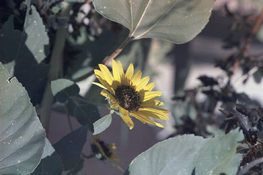
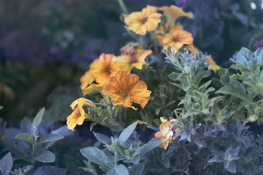

The main difference I can think of is the second roll spent more time in the remjet removal process. What's odd is that the color issue is not on all frames. I'll have to take a look and see if it correlates to a position in the reel.
Once more film shows up, I will play a little more with the remjet removal process, try other formulas, and also try the removal step after development.



To me the C41 results also look good on negative scans. Did you try any RA4 prints from the C-41 developed negatives? The first scan of an RA4 print you posted looks far inferior to the negative scan (of course, I assume that was the point of including it) while the second one looks acceptable, or would if not seen beside the negative scan which still looks noticeably better than the RA4 print scan. I'm wondering which would work better for negatives when RA4 printing is planned from these films, C-41 or ECN-2, or if one should just give up and RA4 print only from native C41 films.
The second pair of negative/print scan is Vision3 500T shot at about 1250 ISO and push 2 developed in C-41. As you can guess my point for including this example was to show that if you build up the contrast in the ECN-2 negative it will be much easier to print. C-41 gives you more contrast, push processing as well.
In the first pair of negative/print scan the scene had very high contrast, but standard processing in ECN-2 just didn't produce the negative that would print well (even on the most saturated/contrasty paper available). It's acceptable, but when you compare it to a scan that tries to match my recollection of the scene... it's not quite there.
Sonynolta User
Member
The second pair of negative/print scan is Vision3 500T shot at about 1250 ISO and push 2 developed in C-41. As you can guess my point for including this example was to show that if you build up the contrast in the ECN-2 negative it will be much easier to print. C-41 gives you more contrast, push processing as well.
Wow. I didn't notice the push+2 part of the C41 & print. I know I'm looking at a scan/screen jpg of it, but I'd say it looks pretty nice. I'm planning to try some color printing again (did some back in the 80s on the previous process) now that I'm older, stupider and own a Jobo. My wallet is bad, and it must be punished. I will shoot and print film.
Roger Cole
Member
The second pair of negative/print scan is Vision3 500T shot at about 1250 ISO and push 2 developed in C-41. As you can guess my point for including this example was to show that if you build up the contrast in the ECN-2 negative it will be much easier to print. C-41 gives you more contrast, push processing as well.
In the first pair of negative/print scan the scene had very high contrast, but standard processing in ECN-2 just didn't produce the negative that would print well (even on the most saturated/contrasty paper available). It's acceptable, but when you compare it to a scan that tries to match my recollection of the scene... it's not quite there.
Wow. I didn't notice the push+2 part of the C41 & print. I know I'm looking at a scan/screen jpg of it, but I'd say it looks pretty nice. I'm planning to try some color printing again (did some back in the 80s on the previous process) now that I'm older, stupider and own a Jobo. My wallet is bad, and it must be punished. I will shoot and print film.
Me either, in fact I somehow missed that the second set was in C41. The short text between large images I suppose but definitely not your fault, just mine.
In that second set, on my monitor it actually looks like the RA4 print version is more neutral. The white wall between the large..blocks? ..anyway, the central white wall is more neutral white while it looks a bit warm on my monitor in the negative scan. The negative scan is still much more pleasing, however, and the skin tone of the child looks more natural, where it seems maybe a tad cyan in the print version - again on my monitor which means it doesn't really mean much at all and it's a tiny area even on my 27" monitor in any case.
Hm. It seems these are best reserved for scanning. Elsewhere there's some information about increasing contrast in RA4 prints by the addition of hydrogen peroxide to the developer, at least if memory serves that's the method, along with some other methods that were less preferred by those who tried them. As far as I know the ONLY RA4 paper readily available now is Fuji Crystal Archive and the contrast just "is what it is" as far as the paper is concerned, not like the days when Kodak made RA4 paper in, effectively, two contrast grades. I preferred the higher contrast of the two except perhaps for some portraits as the difference was small anyway, maybe the equivalent of a half grade in B&W papers at most. Small, but noticeable.
Maybe as things (hopefully) continue to normalize Kodak will return to making RA4 paper and we'll have more choice again. Then black and white paper, then the return of Ektalure except in multiple grades then... just as I was thinking "Kodachrome" I woke up.
 But a return to making RA4 paper seems at least plausible.
But a return to making RA4 paper seems at least plausible.I got my roll of 250D in. Some things I have learned so far,
I accidentally shot the film at ISO400 and processed it normally, the results were not good. It also seemed my bleach is getting bad, base seems darker than it should, I think bad bleach can do this. I will run the film through bleach again and see if it changes anything. Also for this roll, I used soda ash instead of the driveway cleaner to remove the remjet. At first it seemed to work just as well, but then I realized that there was still some carbon on the film, It wiped off easily and I did not notice it on the emulsion side. This roll is generally a throw away, I still want to re bleach for a data point.
I shot a second roll ( this time at ISO 250 ) and used the driveway cleaner to clear the remjet. When done, there was no remjet residue on the film. Seems that perhaps the added detergents and surfactants help wash things away. The results on this roll were much better but I still want to work on the process some.
Things I will still try,
Add some surfactant to the soda ash mix to help wash things away
Try RA4 chemistry - only because I have seen some references to RA4 developer being closer to ECN2 and working well with Vision film. I need to research this more
So far I have just been washing in the tank by rotating. I do have a Jobo washer that might do a better job.
I have some ECN2 chemistry on the way, I will also try it and see what I think.
I will also play with shooting at different ISO ratings and see if there is a sweet spot for this film. 400 was bad, so will try lower.
With 400 feet to play with there is lots of things to try.
Attached are some quick low resolution scans, high res are in process and do look much better, also with IR dust removal. You can see I also have a dust problem to fix.


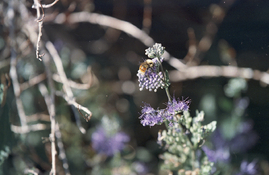
I accidentally shot the film at ISO400 and processed it normally, the results were not good. It also seemed my bleach is getting bad, base seems darker than it should, I think bad bleach can do this. I will run the film through bleach again and see if it changes anything. Also for this roll, I used soda ash instead of the driveway cleaner to remove the remjet. At first it seemed to work just as well, but then I realized that there was still some carbon on the film, It wiped off easily and I did not notice it on the emulsion side. This roll is generally a throw away, I still want to re bleach for a data point.
I shot a second roll ( this time at ISO 250 ) and used the driveway cleaner to clear the remjet. When done, there was no remjet residue on the film. Seems that perhaps the added detergents and surfactants help wash things away. The results on this roll were much better but I still want to work on the process some.
Things I will still try,
Add some surfactant to the soda ash mix to help wash things away
Try RA4 chemistry - only because I have seen some references to RA4 developer being closer to ECN2 and working well with Vision film. I need to research this more
So far I have just been washing in the tank by rotating. I do have a Jobo washer that might do a better job.
I have some ECN2 chemistry on the way, I will also try it and see what I think.
I will also play with shooting at different ISO ratings and see if there is a sweet spot for this film. 400 was bad, so will try lower.
With 400 feet to play with there is lots of things to try.
Attached are some quick low resolution scans, high res are in process and do look much better, also with IR dust removal. You can see I also have a dust problem to fix.



So far I have just been washing in the tank by rotating. I do have a Jobo washer that might do a better job.
I've done a side-by-side ECN-2, C-41 and RA-4 test a while ago. These are inverted scans and edited to get them close, but didn't go into fixing individual hues. If I still have the negatives (and I can find them!) I'll post the uninverted scans. I remember RA-4 being denser than even C-41 one and with higher base fog. I never pursued the matter further but I guess my next step would be to use more diluted RA-4 developer...
ECN-2, C-41, RA-4:



To me, the results from all 3 look good. I think the plus I get ( reading about ) from using RA4 is for dye stability long term. Do you notice a change in grain from one process to another?
If you do find them, it would be interesting to see a scan of each without any extra correction ( giving the scanning software a film type ).
Does one look more true to the original scene than the others to you?
Did one seem like it would do a traditional print better?
If you do find them, it would be interesting to see a scan of each without any extra correction ( giving the scanning software a film type ).
Does one look more true to the original scene than the others to you?
Did one seem like it would do a traditional print better?
Sorry, I looked but can't find the negatives. From memory, RA-4 was denser and seemed to have higher magenta density in particular. While ECN-2 and C-41 were similar (with expected lower contrast and Dmax for ECN-2), RA-4 was quite visibly different (not just overdeveloped). I was hoping that RA-4 would be closer to ECN-2 than C-41, but after one test this didn't appear to be the case.
Unfortunately, I never looked closely at the grain to have anything to say about the difference the developer makes.
Unfortunately, I never looked closely at the grain to have anything to say about the difference the developer makes.
Last edited:
Sonynolta User
Member
Joel_LThings I will still try,
Add some surfactant to the soda ash mix to help wash things away
Try RA4 chemistry - only because I have seen some references to RA4 developer being closer to ECN2 and working well with Vision film. I need to research this more
So far I have just been washing in the tank by rotating. I do have a Jobo washer that might do a better job.
I have some ECN2 chemistry on the way, I will also try it and see what I think.
I recently tried RA4 at quarter strength (divide Kodak's dilution rate for paper by 4) on either 50D or 500T and while I did get images of good density, the colors seemed a bit funky, with green shadow tint, and magentish highlights. If I used 500T, I would have used a 85B filter, as I'm not into the current fad of funky colored Cinestill 800T colors.
I believe the thought is right since RA4 & ECN2 use CD3 as their color developer, but there may some secret sauce to get more normal colors on film. Or maybe my scanning skills are off. But I'm blaming the chemistry for now.
I'm thinking of my next experiment to be a 50:50 mix of Flexicolor Dev & RA Dev.
PhotoEngineer would likely be appalled. But I majored in business, not chemistry. (But took more than the requisite science courses.)
Last edited:
there may some secret sauce to get more normal colors on film
Indeed. Interestingly, there's more secret sauce involved in RA4 developer than in ECN-2 soup.
Now, there are different flavors, apparently. For instance, PE's post cited above gives a pH for the RA4 developer of 10.04 (give or take), while Fuji RA4 ranges from 10.08 all the way up to 10.30. So the question is also, what RA4 are we talking about?
One thing is certain: RA4 developer isn't formulated to develop ECN2 films. Given the variety that's apparently out there, it may even be so that one particular RA4 developer does very well for this (re)purpose, whereas another gives sub-par (even more so) results.
What you said about the developing agent is correct; it's CD3 in both and that's good news for dye stability of the resulting image. But getting the color balance right, depends on so much more than that.
I majored in business
Don't worry about it, it heals over time. I can know.
- xkaes
- Deleted
Cholentpot
Member
- Joined
- Oct 26, 2015
- Messages
- 6,743
- Format
- 35mm
I've done a side-by-side ECN-2, C-41 and RA-4 test a while ago. These are inverted scans and edited to get them close, but didn't go into fixing individual hues. If I still have the negatives (and I can find them!) I'll post the uninverted scans. I remember RA-4 being denser than even C-41 one and with higher base fog. I never pursued the matter further but I guess my next step would be to use more diluted RA-4 developer...
ECN-2, C-41, RA-4:



They all look good. I was always told that cross processing in C-41 is awful and why would you do that? Aside from slight differences it's more than good enough. It's perfectly good results to my eyes. The RA-4 does look slightly grainier.
So far to me, the C41 processing looks fine, but the concern of stability still exists.
Today I did try something different, I processed first and cleared the remjet after blix ( blix, ya I know ). The negatives came out much better. Previously the base ( edges ) were quite dark. I didn't think about it too much other than it seemed off, but then, I had never tried Vision film before. This roll, the negatives look as I would have expected and the grain looks better as well. So as mentioned before, maybe soaking all that time before developing is impacting the images, sure seems so. I also tried a different method to clear the remjet, it did not work as well but did mechanically clean off OK. I'm going to try another roll and clean the remjet post processing using the DWC method which just seems to work.
Today I did try something different, I processed first and cleared the remjet after blix ( blix, ya I know ). The negatives came out much better. Previously the base ( edges ) were quite dark. I didn't think about it too much other than it seemed off, but then, I had never tried Vision film before. This roll, the negatives look as I would have expected and the grain looks better as well. So as mentioned before, maybe soaking all that time before developing is impacting the images, sure seems so. I also tried a different method to clear the remjet, it did not work as well but did mechanically clean off OK. I'm going to try another roll and clean the remjet post processing using the DWC method which just seems to work.
After 5 rolls of the 250D I have settled on a C41 process for now. What I learned is that removing the remjet has a huge negative impact. Funny cause my first roll of 50D I was OK with. I never used this Vision film so had no idea what to expect, scanning forgives a lot of sins. I had always thought the negatives were dark ( base fog? ), but again, I did not know what to expect from this film. The comment about all this pre soaking affecting development made sense as well as what if there is still residual "cleaner" soaked in. When I went to developing first, then clearing the remjet, the effect was quite immediate and obvious, the film base looked like what I would normally expect. So, develop first, clear remjet after. I use my developer one shot anyway, so this does not bother me at all.
When it comes to clearing the remjet, I tried a few things, first baking soda, never did a good job for me. Soda ash, cleared the film visually but there was still black dust left on the film. It wiped off easily but still not what I was looking for. The driveway cleaner ( DWC ) just worked best all around. When I'm done, there is no remjet left to clean off.
So the process I use,
Develop the film as normal C41.
Rinse with water once after the blix step.
drain drum and remove from processor ( I use a Jobo CPE2+ )
fill with the non rotation quantity of DWC mixed 10ml to 500ml water.
let sit for 30 seconds.
Shake, and invert quickly for 30 seconds.
place back in Jobo and let rotate for 30 seconds
drain and fill with 150ml of DWC, let rotate for 30 seconds
drain and fill with 150ml of DWC, let rotate for 30 seconds ( this uses up the 500ml I mixed )
wash film your favorite way, I put a liter of water through 200 ml at a time. It seems to work OK to stop here but I used my Jobo bubbler for a few minutes after removing from the processor
Stabilize
dry
I had no residue to wipe off the film, I handle the film with white cotton gloves and nothing comes off on them. Oddly the tank does collect black residue the easily cleans off.
Here are some latest samples and progression of negatives.
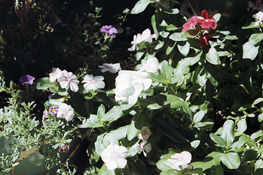

here are the negatives starting with the first 50D, 250D, then 250D final process
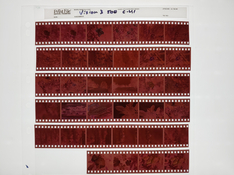
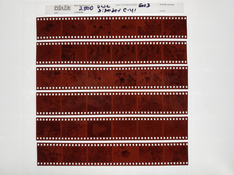
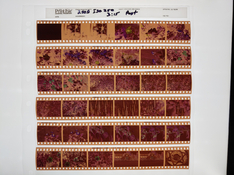
When it comes to clearing the remjet, I tried a few things, first baking soda, never did a good job for me. Soda ash, cleared the film visually but there was still black dust left on the film. It wiped off easily but still not what I was looking for. The driveway cleaner ( DWC ) just worked best all around. When I'm done, there is no remjet left to clean off.
So the process I use,
Develop the film as normal C41.
Rinse with water once after the blix step.
drain drum and remove from processor ( I use a Jobo CPE2+ )
fill with the non rotation quantity of DWC mixed 10ml to 500ml water.
let sit for 30 seconds.
Shake, and invert quickly for 30 seconds.
place back in Jobo and let rotate for 30 seconds
drain and fill with 150ml of DWC, let rotate for 30 seconds
drain and fill with 150ml of DWC, let rotate for 30 seconds ( this uses up the 500ml I mixed )
wash film your favorite way, I put a liter of water through 200 ml at a time. It seems to work OK to stop here but I used my Jobo bubbler for a few minutes after removing from the processor
Stabilize
dry
I had no residue to wipe off the film, I handle the film with white cotton gloves and nothing comes off on them. Oddly the tank does collect black residue the easily cleans off.
Here are some latest samples and progression of negatives.


here are the negatives starting with the first 50D, 250D, then 250D final process



blee1996
Subscriber
So far I have been following the standard ECN-2 process (remjet first), and the negatives seem to have the right tint and scan well.
@Joel_L : would it be possible that your BLIX is a bit weak, so the DWC after developing acts as additional bleach? Just a thought.
Would love to hear other people's experience regarding remjet removal first or developing first.
@Joel_L : would it be possible that your BLIX is a bit weak, so the DWC after developing acts as additional bleach? Just a thought.

Would love to hear other people's experience regarding remjet removal first or developing first.
Cholentpot
Member
- Joined
- Oct 26, 2015
- Messages
- 6,743
- Format
- 35mm
I've used Rodinal as remjet removal and it works. It also gives a speed boost.
Mackinaw
Member
I've used Rodinal as remjet removal and it works. It also gives a speed boost.
This sounds interesting. Can you elaborate?
Jim B.
So far I have been following the standard ECN-2 process (remjet first), and the negatives seem to have the right tint and scan well.
@Joel_L : would it be possible that your BLIX is a bit weak, so the DWC after developing acts as additional bleach? Just a thought.
Would love to hear other people's experience regarding remjet removal first or developing first.
I had the same result with freshly mixed chemicals. It could be that the DWC weakens the developer and the bleach. I just see other negative things going on, the grain is night and day different.
When you remove the remjet, what are you using and do you need to mechanically clean the film afterwards? I was looking for a no touch solution and I am quite happy with my latest process. The only thing I would not do using my method is reuse the chemicals. there have been a lot of ways to remove remjet, but all needed some kind of manual wiping afterwards.
I am still waiting for my ECN kit, I do plan to give it a shot.
blee1996
Subscriber
I had the same result with freshly mixed chemicals. It could be that the DWC weakens the developer and the bleach. I just see other negative things going on, the grain is night and day different.
When you remove the remjet, what are you using and do you need to mechanically clean the film afterwards? I was looking for a no touch solution and I am quite happy with my latest process. The only thing I would not do using my method is reuse the chemicals. there have been a lot of ways to remove remjet, but all needed some kind of manual wiping afterwards.
I am still waiting for my ECN kit, I do plan to give it a shot.
I'm using "Ultrafine Motipix Economy ECN-2 Processing Kit 1 Ltr", separate bleach and fixer. I do need to gently wipe down 2-3 times using wet white microfiber cloth, after the final wash. Then it seems all clean. The pre-bath for Remjet removal comes with the kit.
Minolta93
Member
I've used Rodinal as remjet removal and it works. It also gives a speed boost.
I'd also like to hear more about this. I'm especially interested in getting the most speed out of Vision3 500T. I've heard of it being used even at 3200. I'm curious if using it at high speeds and using Rodinal could help with shadow detail.
Cholentpot
Member
- Joined
- Oct 26, 2015
- Messages
- 6,743
- Format
- 35mm
This sounds interesting. Can you elaborate?
Jim B.
I'd also like to hear more about this. I'm especially interested in getting the most speed out of Vision3 500T. I've heard of it being used even at 3200. I'm curious if using it at high speeds and using Rodinal could help with shadow detail.
I made a thread on this a while back
https://www.photrio.com/forum/threads/revisiting-preflashing-with-rodinal.190994/
I was attempting a preflash/predevelop on the film and it turns out that it got rid of the remjet as a side benefit.
250D final process
That 3rd contact sheet does have better dmin, but the gamma is way too high for a color negative film.
mshchem
Subscriber
I had the same result with freshly mixed chemicals. It could be that the DWC weakens the developer and the bleach. I just see other negative things going on, the grain is night and day different.
When you remove the remjet, what are you using and do you need to mechanically clean the film afterwards? I was looking for a no touch solution and I am quite happy with my latest process. The only thing I would not do using my method is reuse the chemicals. there have been a lot of ways to remove remjet, but all needed some kind of manual wiping afterwards.
I am still waiting for my ECN kit, I do plan to give it a shot.
What is the pH of your driveway cleaner solution? I am reading Kodak ECN-2 instructions, says to adjust pH of pre-bath to 10.2. I wonder if a solution of sodium bicarbonate with a tiny amount of NaOH added to bring up pH?
| Photrio.com contains affiliate links to products. We may receive a commission for purchases made through these links. To read our full affiliate disclosure statement please click Here. |
PHOTRIO PARTNERS EQUALLY FUNDING OUR COMMUNITY:  |









